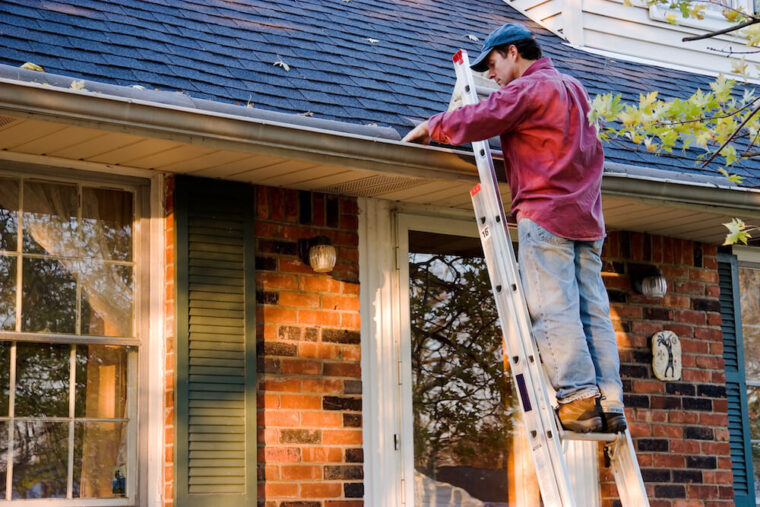Home maintenance is surely driven by seasons. And whether you like it or not, you have to modify your strategies because each season undoubtedly requires various needs for it to last until another season. While it’s a beautiful sight to see some amber leaves outside and take a stroll, now is also a key time to finish up major house repair chores before ice and snowy days make outside labor intolerable.
And if you reside in a region with chilly winters, consider that this is all the information you require before your home’s transition from warm summer days to chilly fall nights and, ultimately, freezing temperatures.
1. Repair air leaks
Examine the caulk around your windows, doors, and any entry points, such as electrical cable, phone, and gas. Try to look for missing or broken caulk and use the appropriate caulk to fill any existing gaps. You may also consider replacing your windows if the drafts surrounding the windows persist. It should be noted that the optimal time to apply caulk is in dry weather when the outside temperature is above 45°F (7.2°C). Doing so can save your heating costs by up to 20%, according to the US Department of Energy.
2. Insulate your home
Insulate your attic to retain heat, which will reduce your utility costs. Think about purchasing a stair cover for the hatchway leading to your attic. Use insulation film or foam rubber sleeves to insulate your water pipes to keep them warm all winter long. Last but not least, insulate your window coverings to add a layer of warmth—like a second blanket—and to keep the heat inside and the cold outside. Don’t forget to include an annual insulation inspection on your home heating maintenance tasks list. On top of that, ensure you take heater safety precautions into account before installing any heating systems if you plan to use them.
3. Tidy-up furnace filter
Conducting a professional inspection of your heating system is an excellent idea. Consider planning this chore for early fall, before the heating season starts, to minimize the last-minute hurry. Remember, furnace filters often capture dust that might otherwise be dispersed throughout your home. Due to this, filters that are clogged make it more difficult to maintain a pleasant temperature in your home, which raises your utility costs.
4. Clean or replace gutters

It is not new that your home’s gutter system diverts millions of gallons of water from the outside of your house and the walls supporting its foundation. According to experts at Gutter Supply, since they are exposed to all types of precipitation, they are also vulnerable to corrosion and rust. Thus, you must clean your gutters and then cover them with mesh gutter guards to prevent re-clogging with debris. If you believe it to be worn out, it is best to have it tested by gutter experts or seek those highly recommended by GutterSupply experts everywhere.
5. Check your fireplace
While a roaring fire is an excellent idea to stay warm in the winter, you might be surprised to learn that fireplaces do not provide homes with adequate heating if they are not designed properly, so you might as well check the following:
- Properly installed top seal dampers.
- Adding a cast iron fireback.
- Properly functioning heater system as they circulate fresh air from inside the house into the fireplace.
- Adding a cast iron fire back.
Before the winter cold makes it more challenging to do so, replace any items that need to be replaced.
6. Ward off gas problems

Maintaining your home’s appliances will help you get rid of dangerous levels of carbon monoxide. For instance, poorly maintained heaters may let dangerous gasses into your home’s air. Other potential sources include:
- Wall furnaces.
- Space heaters.
- Central heating systems.
- Ornamental appliances like decorative log fires.
- Gas valves in the kitchen.
Don’t forget to have these devices inspected by a professional every year because they may impact your health or they may cost more to operate.
7. Examine your roof
Start by thoroughly checking your roof from top to bottom. To do this, you can look for wind damage and cracks in the ridge shingles. Or you may also check for metal flashing damage near vents, chimneys, and valleys. On top of these things, you must also look over the entire roof for curled, missing, or broken shingles. And lastly, you must inspect your gutters for significant granule buildups, which indicate that your roof’s coating is eroding and could indicate more serious issues.
8. Protect your faucets from the freezing weather

One of the most neglected aspects of home maintenance in preparation for fall is your home’s water piping system. It’s vital to drain your house’s outdoor faucets and for your garden hose to be coiled and kept inside your house. Also, try to keep no water in your faucets, as the extreme weather might leave them to freeze and break or even burst. Of course, you do not want to spend money repairing these after winter.
9. Inspect your safety equipment
Check the expiration date on your fire extinguisher and replace it if necessary. On top of that, you must also inspect your smoke and carbon monoxide detectors and replace the batteries if necessary. Fall is a wonderful time to check your home for radon, if you haven’t already, since as the temperature cools and windows are closed more frequently, radon is more likely to become trapped within your house.
Fall home maintenance is always a good treat, regardless of how tedious it is. Following this checklist might surprise you to find that your home is ready even before the chilly nights turn into freezing ones. And as is always the case, being ready will help you prevent problems caused by negligence.

